
Roots
The story of human connection, often whispered in quiet moments or expressed through shared laughter, holds a special place within the world of hair care. It is a story as old as human society itself, where the simple act of attending to another’s strands transcended mere grooming, becoming a profound ritual of bonding. Before the rise of individual beauty routines and product aisles, hair care was a communal endeavor, a rhythmic dance of hands and heads that solidified social structures and transferred cultural knowledge.
The earliest expressions of human adornment frequently involved hair, not solely for aesthetic appeal, but as a vibrant marker of identity, status, and group affiliation. This inherent social dimension meant that hair care techniques were never isolated acts; they were, at their core, practices of community building, a tangible expression of care and belonging.

The Social Fabric of Hair Practices
Across various cultures and historical periods, hair served as a silent language, communicating complex messages without uttering a single word. The specific styles, their intricate patterns, and the tools used in their creation often denoted an individual’s lineage, marital status, age, or even their spiritual alignment. For textured hair, particularly within African societies, this connection was especially profound.
The natural coils and kinks, with their unique structure, invited a communal approach to maintenance and styling. This necessity transformed hair care into a shared experience, an occasion for families and communities to gather.
Hair care, particularly in its communal forms, historically transcended mere grooming to become a fundamental social activity, a silent language of connection and identity.
Consider the anatomy of textured hair itself; its density and curl patterns often require more time and specialized techniques for detangling, cleansing, and styling. This inherent characteristic made solo hair care a less practical, and certainly less joyful, endeavor in many historical contexts. Instead, these practices became opportunities for intergenerational teaching and storytelling.
Younger members learned techniques from elders, absorbing not only the mechanics of a cornrow or a twist but also the histories, songs, and wisdom passed down through generations. The very act of hands working through another’s hair, a repetitive, gentle motion, built trust and intimacy.

Early Techniques and Their Communal Echoes
Ancient civilizations, from the Egyptians to various West African groups, practiced elaborate hair rituals. These were not quick affairs. They demanded patience, skill, and often, multiple participants.
- Braiding ❉ A primary method, braiding was a cornerstone of social connection. It required close proximity and often several hours, during which stories were shared, news exchanged, and bonds deepened. This practice extended beyond simple styling; it was a conduit for oral traditions and communal memory.
- Cleansing Rituals ❉ Early hair cleansing involved natural ingredients, often prepared collectively. Think of gatherings by rivers or communal wells, where individuals assisted one another in washing and rinsing, transforming a functional act into a shared moment of cleanliness and social interaction.
- Adornment Application ❉ The adding of beads, shells, or other ornaments to hair was another collaborative effort. These decorative elements often held symbolic meanings, and their placement required precision and assistance, further solidifying the communal aspect of hair beautification.
The intrinsic nature of textured hair, demanding a more involved and often lengthy care process, thus positioned hair practices as central to community life. It was a time when the personal act of preparing one’s appearance became a public affirmation of belonging.
| Tool Category Combs |
| Traditional Examples Wooden combs, bone combs |
| Social Implication Used for detangling, often a shared, gentle act between individuals. |
| Tool Category Styling Aids |
| Traditional Examples Fingers, natural fibers |
| Social Implication Direct human contact, hands-on shaping, requiring proximity and interaction. |
| Tool Category Decorative Elements |
| Traditional Examples Beads, shells, cowrie shells |
| Social Implication Applied by others, signifying status or affiliation, often in communal settings. |
| Tool Category These simple tools facilitated intimate exchanges and shared moments within communities. |
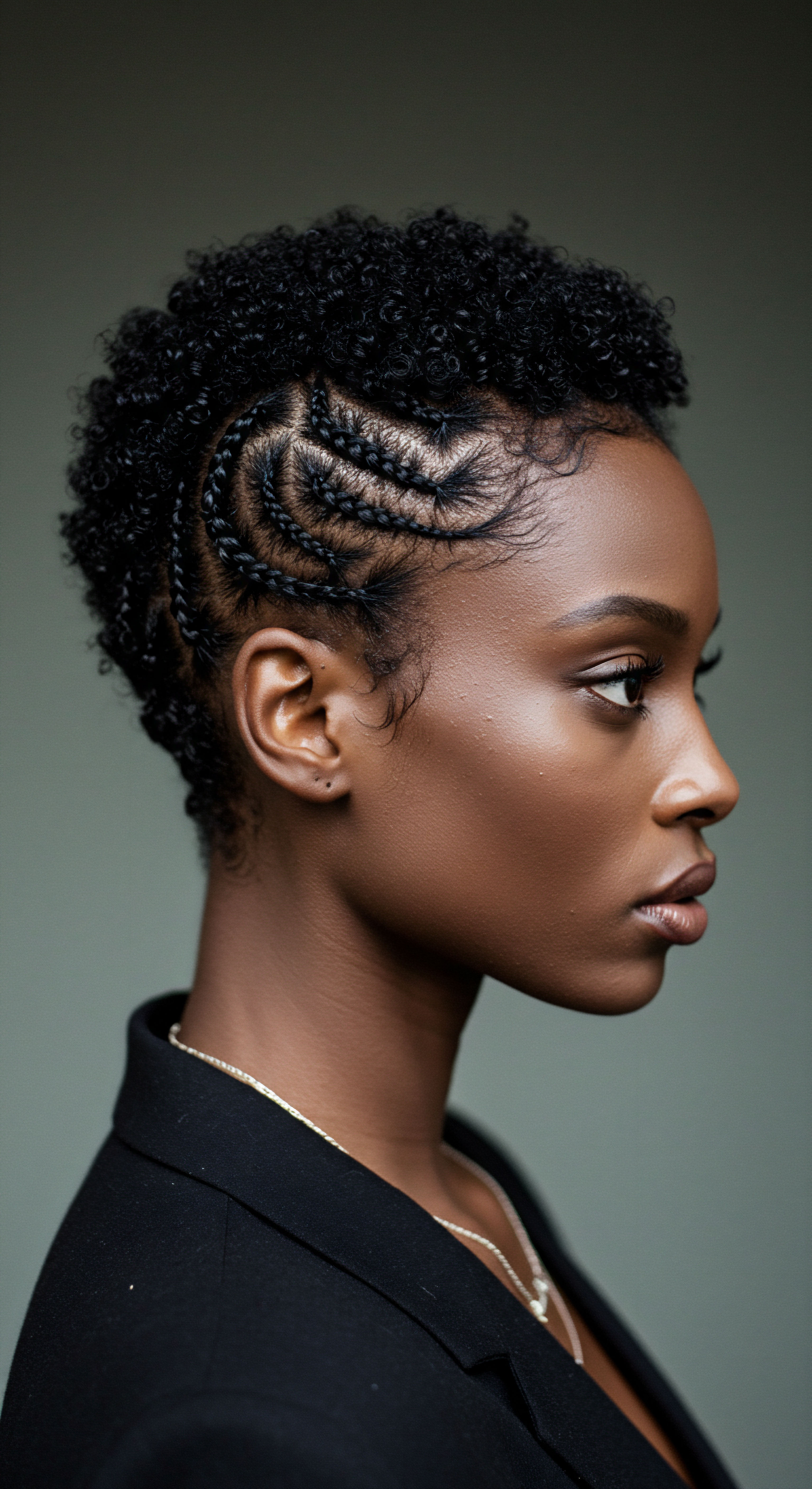
Ritual
The daily rhythms of life, often punctuated by moments of self-care, possess a deeper current when it comes to hair. For many, hair care is not merely a task to be completed, but a ritual, a sequence of deliberate actions imbued with meaning that extends beyond the physical outcome. This is particularly true for those with textured hair, where routines frequently become extended periods of attention, offering a quiet space for reflection or, more powerfully, an invitation for shared experience. The very act of setting aside time for specific techniques transforms a functional need into a patterned observance, often involving others, thereby deepening its social significance.
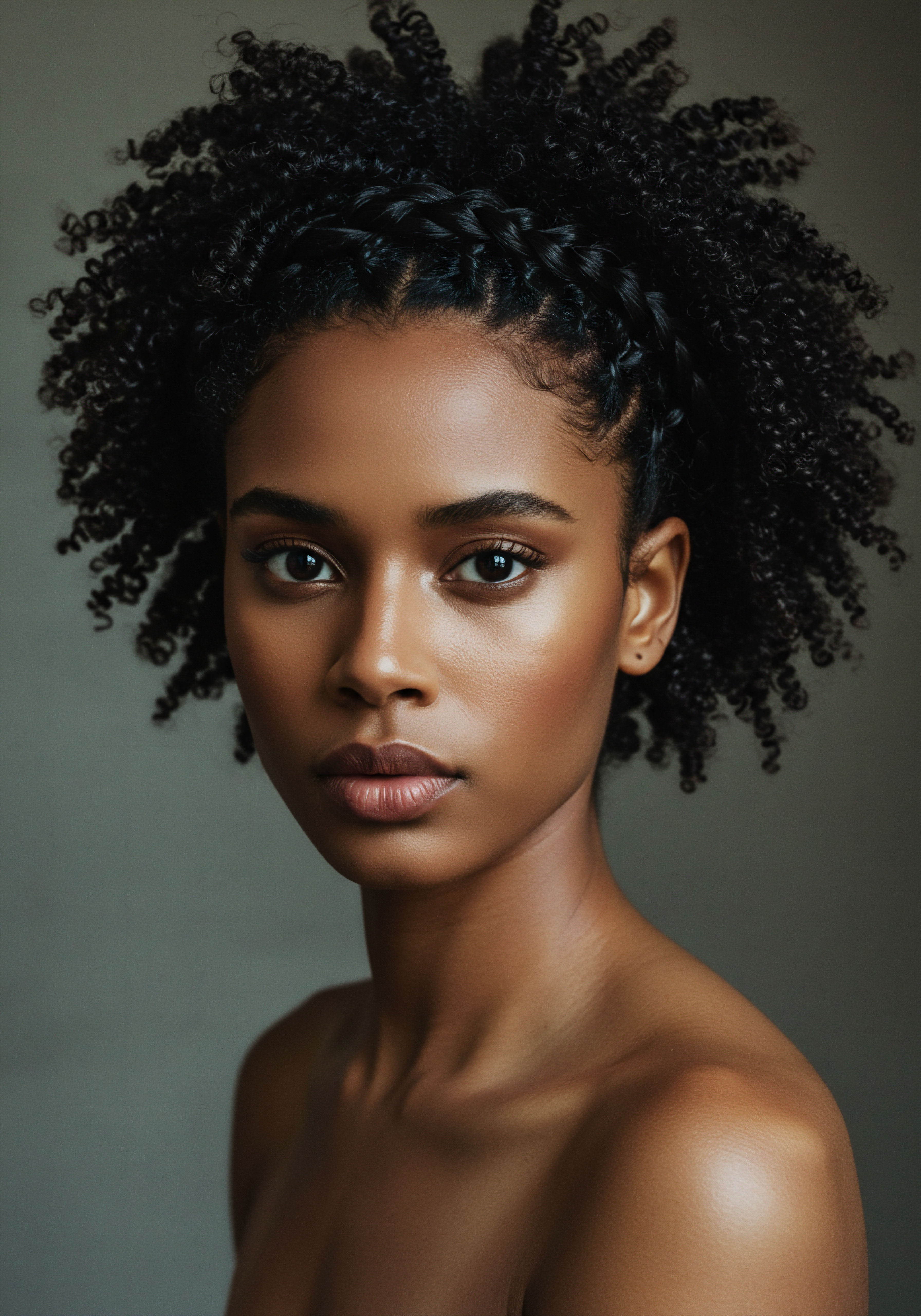
The Communal Nature of Grooming
The salon, in its various forms, stands as a prime example of hair care evolving into a vibrant social institution. From ancient communal bathing houses where hair was washed and dressed, to the bustling barbershops and beauty parlors of today, these spaces have consistently served as gathering points. They are arenas for conversation, advice, laughter, and sometimes, even solace.
Here, techniques are not simply applied; they are performed, witnessed, and discussed. The shared experience of waiting, watching, and engaging in lighthearted banter forms a social bond, however transient, among patrons and stylists.
Hair care routines, especially within communal settings like salons, evolve into meaningful rituals that strengthen social ties and serve as informal community hubs.
The intimate nature of hair work, requiring physical closeness and a degree of vulnerability, naturally lends itself to connection. A stylist’s hands working through hair, the gentle tug of a comb, the shared gaze in a mirror—these are subtle cues that build rapport. For generations, these interactions have transcended the transactional, creating relationships built on trust and understanding.

Styling as a Shared Practice
Certain hair care techniques, by their very nature, invite collaboration and shared time.
- Protective Styling Sessions ❉ Techniques such as cornrows, box braids, or twists often take hours to complete. These extended sessions are rarely solitary affairs. They are opportunities for friends, sisters, or mothers and daughters to spend quality time together, engaging in conversation, sharing meals, or simply existing in comfortable silence. This communal effort transforms a lengthy styling process into a bonding experience.
- Hair Drying Circles ❉ In many homes and communities, especially where air drying is preferred, individuals might gather to dry their hair together after washing. This informal assembly creates a relaxed atmosphere for discussion and mutual support, where individuals might share product recommendations or styling tips.
- Product Mixing and Application ❉ The creation of homemade hair remedies or the careful application of conditioners and oils can also become a shared ritual. Learning family recipes for hair masks or assisting another with a deep conditioning treatment reinforces familial and communal ties.
These practices go beyond superficial beauty. They are about care, shared knowledge, and the silent affirmation of identity within a collective. The sounds of clippers, the scent of styling products, the rhythmic pull of a comb—these sensory elements become associated with feelings of belonging and shared heritage.

The Salon as a Community Anchor
Modern hair salons and barbershops, particularly within Black communities, are more than just places for grooming. They function as vital social hubs, providing a sense of refuge and socio-cultural connection. These establishments serve as informal meeting places where individuals discuss current events, personal triumphs, and challenges.
| Function Information Exchange |
| Description Discussions on local news, politics, and personal matters. |
| Community Benefit Builds informed and connected community members. |
| Function Support Networks |
| Description Sharing advice, offering emotional support, peer mentorship. |
| Community Benefit Creates a sense of kinship and collective well-being. |
| Function Cultural Preservation |
| Description Passing down styling techniques and cultural narratives. |
| Community Benefit Reinforces identity and heritage across generations. |
| Function These establishments provide social capital and a sense of belonging beyond hair services. |
This phenomenon is well-documented. Research indicates that clients frequent these spaces not solely for physical care, but for the kinship and refuge they offer. These locations are important for the mental and emotional well-being of individuals, particularly within populations that have historically faced oppression and disenfranchisement. The familiar relationships between patrons and their stylists, combined with the recurring nature of visits, create a reliable setting for social cohesion.

Relay
How does the careful attention to one’s hair become a profound statement of collective identity and resilience? The answer lies not just in the visible style, but in the deeper cultural currents and historical pressures that shape hair care techniques into acts of shared defiance and communal memory. For textured hair, the very act of styling often transcends individual preference, carrying with it echoes of ancestral practices, responses to societal pressures, and a powerful assertion of belonging. This section explores how specific hair care techniques have served as conduits for transmitting cultural values, resisting external norms, and solidifying social bonds in ways that extend far beyond mere aesthetics.
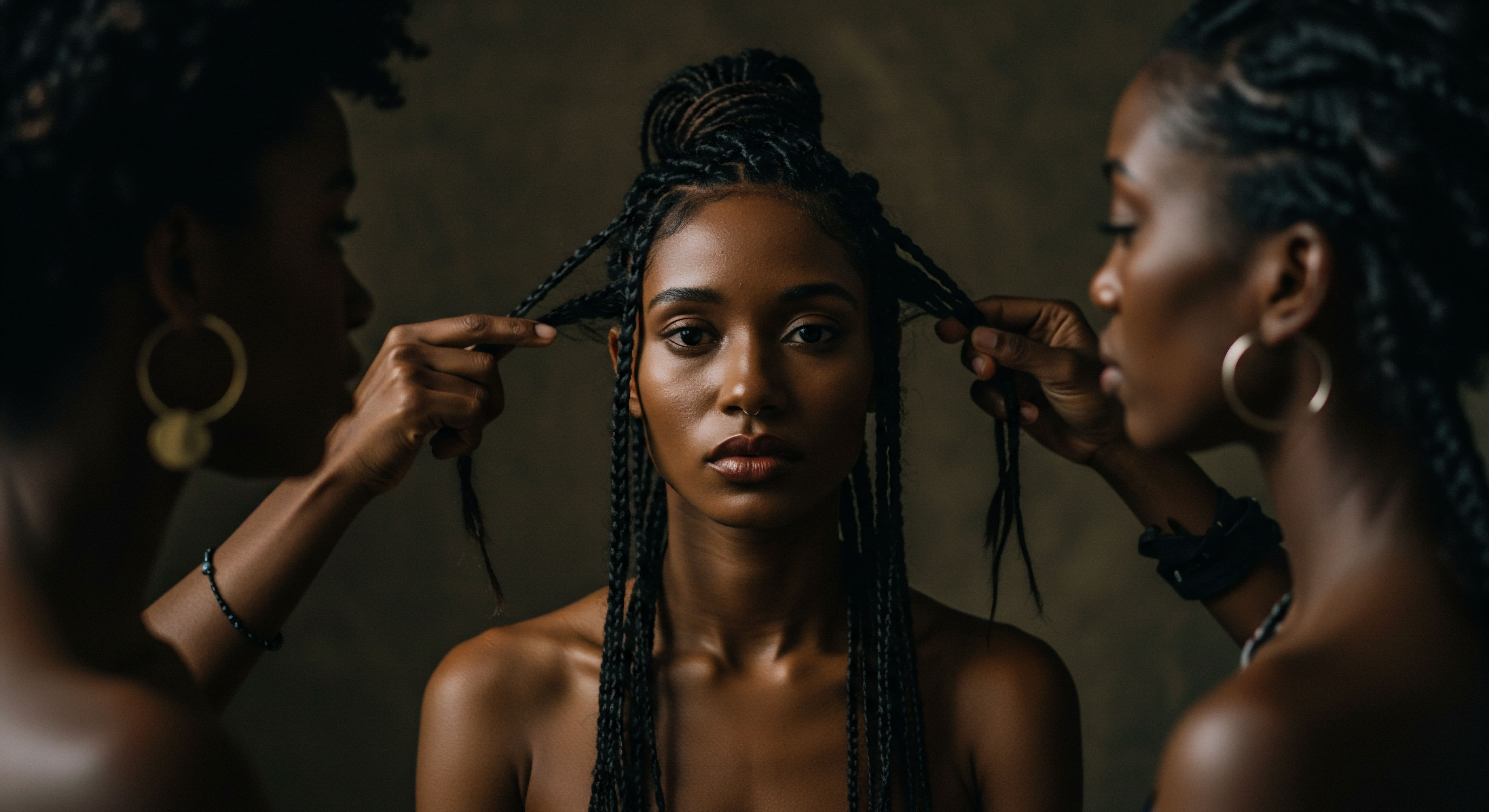
Hair as a Symbol of Resistance and Solidarity
The history of textured hair care is inextricably linked to movements of self-determination and group cohesion. In many societies, particularly those subjected to colonization or enslavement, hair became a silent, yet potent, battleground for identity. The deliberate maintenance of traditional styles, despite pressure to conform to dominant beauty standards, served as a powerful act of resistance. This was not simply about personal choice; it was a collective declaration.
Hair care practices, especially within communities facing historical adversity, transformed into powerful symbols of resistance and collective identity, communicating messages beyond words.
Consider the profound historical example of hair braiding among enslaved Africans in the Americas. In a context where verbal communication was often restricted and surveillance was constant, hair became a medium for covert messaging. Enslaved individuals would braid maps to freedom routes into their hair, or hide seeds within their styles for future planting. This practice, a specific hair care technique, directly fostered social connection and survival.
It was a clandestine communication system, a shared secret held within the very strands of their hair, demonstrating how intimate grooming could become a tool for collective liberation. This historical act, documented in works like “Hair Story ❉ Untangling the Roots of Black Hair in America” by Ayana Byrd and Lori Tharps, offers a poignant illustration of how hair care techniques became vital for community solidarity and the preservation of cultural memory under duress.
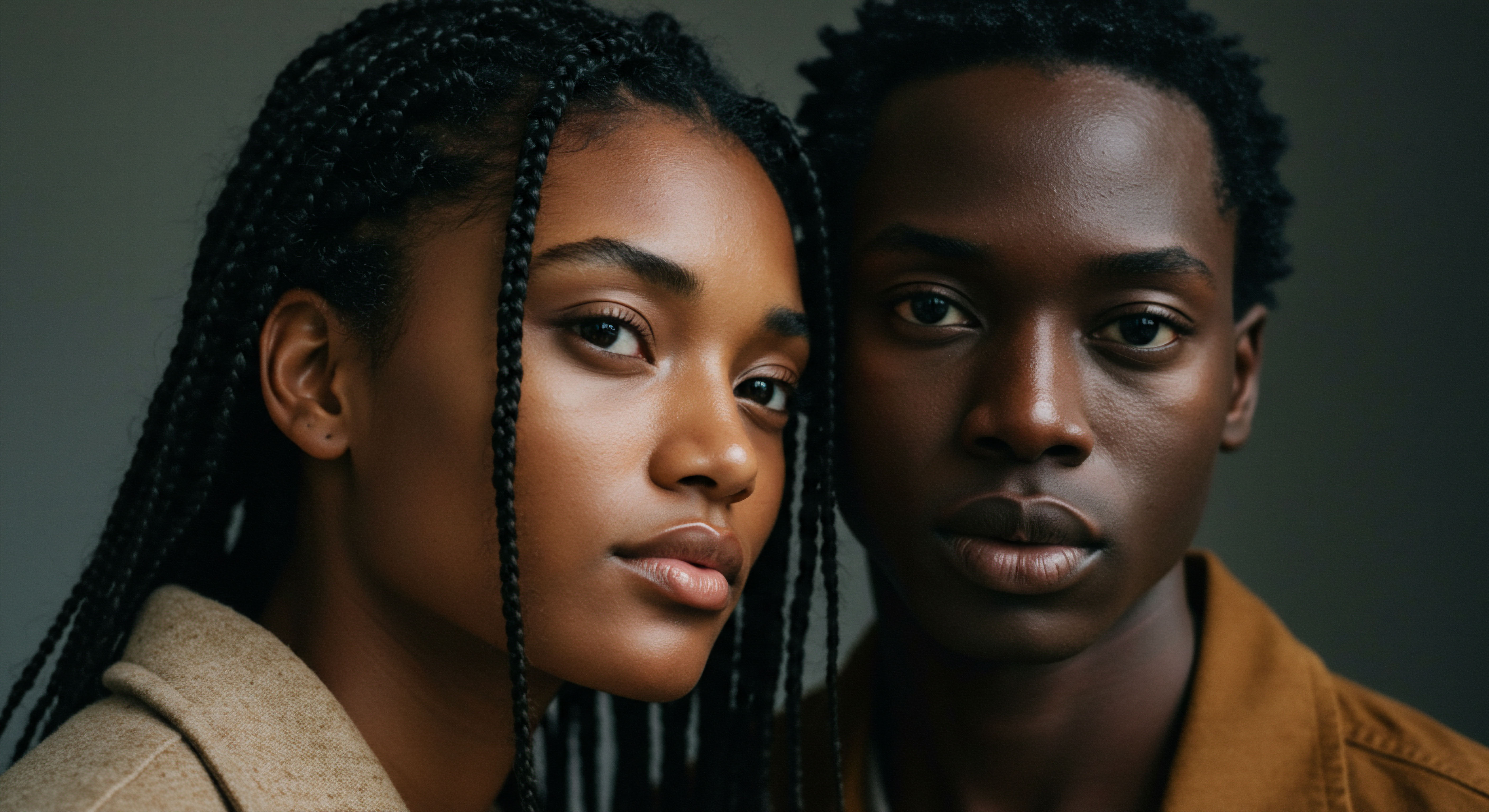
The Psychology of Shared Hair Experiences
Beyond overt resistance, the shared experience of hair care taps into fundamental human psychological needs for belonging and affirmation. When individuals engage in communal grooming, whether in a salon or a family setting, oxytocin, a hormone associated with bonding and trust, may be released. This physiological response reinforces the positive social connections being formed.
Research on mutual grooming in human relationships, though often focused on romantic partnerships, suggests that such physical intimacy, including hair care, can significantly correlate with relationship satisfaction and trust. This extends to broader social groups, where shared styling sessions become opportunities for psychological comfort and communal reinforcement.
The psychological impact of seeing one’s own hair type celebrated and cared for within a community is immense. In societies where textured hair has been historically devalued or marginalized, communal hair care spaces offer a crucial counter-narrative. They are places where individuals receive affirmation, learn self-acceptance, and gain confidence in their natural appearance. This collective validation contributes to stronger self-esteem and a deeper sense of belonging to a shared cultural heritage.

How Do Hair Care Techniques Reinforce Cultural Values?
Hair care techniques are not static; they evolve, yet often carry historical weight and cultural meaning. The meticulous patterns of cornrows, the structured elegance of updos, or the carefree volume of an afro all carry specific cultural references. These styles are learned, replicated, and passed down, becoming a living archive of a community’s aesthetic values and social history.
The practice of hair styling, especially within specific cultural contexts, involves a transfer of not just technical skill, but also a wealth of cultural knowledge.
- Intergenerational Knowledge Transfer ❉ Grandmothers, mothers, and aunts pass down specific braiding patterns and care regimens to younger generations. This oral tradition is a powerful way to transmit cultural identity and familial bonds.
- Community Standards of Beauty ❉ Shared styling practices reinforce what is considered beautiful or appropriate within a particular group. This collective agreement on aesthetic norms strengthens internal cohesion and a distinct group identity.
- Adaptation and Innovation ❉ While rooted in tradition, hair care techniques also adapt to new contexts and materials. The communal sharing of new products, tools, or styling methods keeps the practices dynamic while retaining their core cultural significance.
The economic aspect of hair care also plays a role in social connection. Black-owned hair salons, for example, have historically been economic anchors and community hubs, providing employment, circulating wealth within the community, and serving as informal social service centers. These establishments are not just businesses; they are extensions of community life, where the exchange of services is intertwined with social support and collective action. The financial sustainability of these spaces directly contributes to the social health of the communities they serve.
| Technique Category Communal Braiding |
| Societal Function Information exchange, solidarity, covert communication. |
| Cultural Example Enslaved Africans braiding maps into hair. |
| Technique Category Salon Visits |
| Societal Function Social support, community building, economic circulation. |
| Cultural Example Black hair salons as community anchors. |
| Technique Category Shared Cleansing Rituals |
| Societal Function Hygiene, intimate bonding, shared resource use. |
| Cultural Example Ancient communal bathing practices. |
| Technique Category These techniques serve as powerful mechanisms for social cohesion and cultural transmission. |
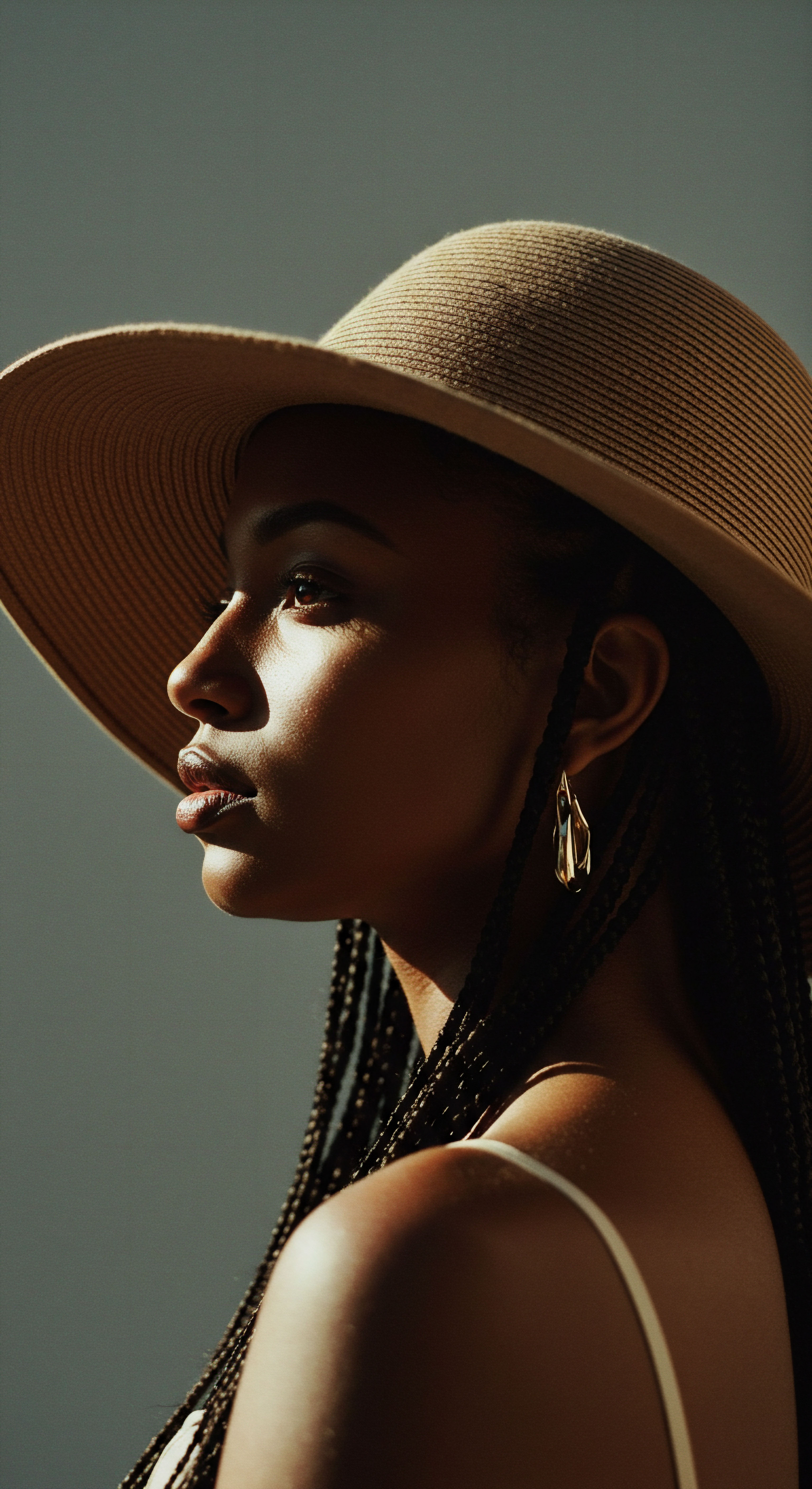
What is the Impact of Hair on Collective Identity Formation?
The choice of hairstyle can serve as a profound marker of collective identity. During periods of significant social change, such as the Civil Rights Movement, the adoption of natural hairstyles like the afro became a symbol of Black pride and a rejection of Eurocentric beauty standards. This was a deliberate act of collective identity formation, signaling alignment with a political ideology and a demand for racial equality. The visible expression of these styles created immediate recognition and solidarity among those who wore them, serving as a non-verbal banner of unity.
The collective decision to wear certain styles creates a shared aesthetic that binds a group. This visual unity reinforces internal group boundaries and a sense of shared consciousness. It becomes a statement to the wider world, a declaration of who “we” are.
The ongoing policing of textured hair in schools and workplaces underscores the persistent power of hair as a racialized symbol and, conversely, the power of communal hair choices as acts of defiance and self-affirmation. The resilience demonstrated in maintaining these practices, despite external pressures, further solidifies the bonds within the community.
The discussions and shared experiences surrounding hair care within these communities also contribute to a collective understanding of identity. Conversations about navigating discrimination, finding suitable products, or celebrating new styles all contribute to a shared narrative. This constant dialogue, occurring during the very acts of hair care, builds a robust collective identity, rooted in shared history, present challenges, and future aspirations.
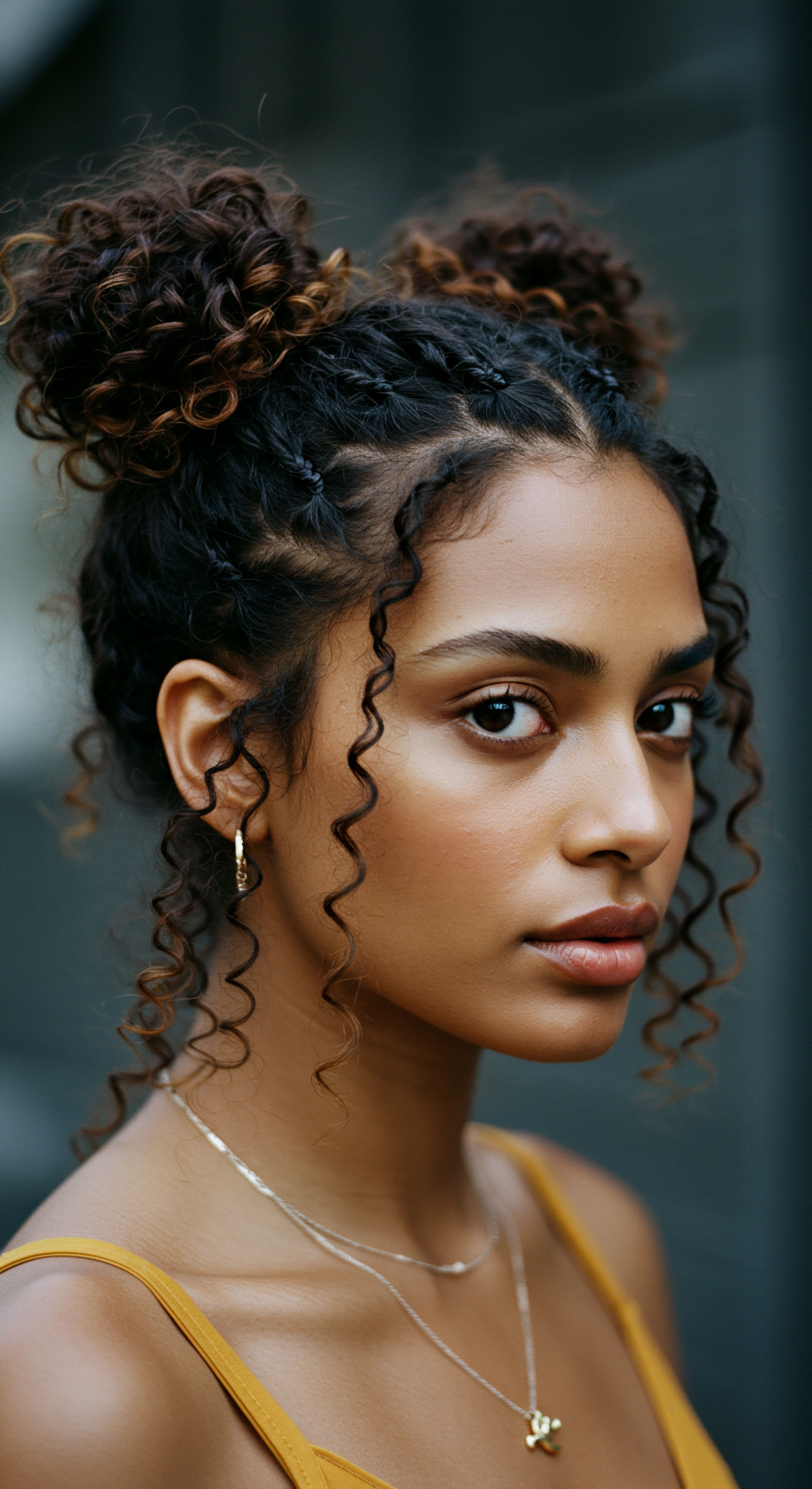
Reflection
The gentle hum of conversation in a busy salon, the quiet rhythm of hands working through coils, the shared laughter over a childhood hair mishap – these are not just fleeting moments. They are echoes of an ancient practice, a testament to how the seemingly simple act of caring for hair has, for generations, been a powerful conduit for human connection. From the necessity of communal grooming in earlier times to the deliberate choices of style that speak volumes about identity and belonging today, hair care remains a deeply social endeavor. It is a reminder that beauty rituals, at their most profound, are expressions of care, shared heritage, and collective strength, weaving individuals into the larger, vibrant fabric of community.

References
- Byrd, Ayana D. and Lori L. Tharps. Hair Story ❉ Untangling the Roots of Black Hair in America. St. Martin’s Griffin, 2014.
- Jacobs-Huey, Lanita. From the Kitchen to the Parlor ❉ Language and Becoming in African American Women’s Hair Care. Oxford University Press, 2006.
- Leach, Edmund. “Magical Hair.” Journal of the Royal Anthropological Institute of Great Britain and Ireland, vol. 88, no. 2, 1958, pp. 147-64.
- Nelson, Richard J. and Glenn Geher. “Mutual Grooming in Human Dyadic Relationships ❉ An Ethological Perspective.” Journal of Social and Personal Relationships, vol. 24, no. 6, 2007, pp. 881-902.
- O’Neal, Gwendolyn. “Becoming Entrepreneurs ❉ Intersections of Race, Class, and Gender at the Black Beauty Salon.” Journal of Women in Culture and Society, vol. 30, no. 2, 2005, pp. 583-605.
- Rosette, Ashleigh Shelby, and Leigh Plunkett Tost. “The Dark Side of the Halo ❉ How Perceived Hair Professionalism Influences Employment Discrimination.” Journal of Consumer Research, vol. 45, no. 1, 2018, pp. 129-47.
- Synnott, Anthony. “Shame and Glory ❉ A Sociology of Hair.” The British Journal of Sociology, vol. 38, no. 3, 1987, pp. 381-413.
- Tarlo, Emma. Entanglement ❉ The Secret Lives of Hair. Oneworld Publications, 2016.
- Willet, J. African American Barbershops and Beauty Salons as Sites of Community Building and Organizing. University of North Carolina at Chapel Hill, 2000.
- Woods, D. and Brunson, R. K. ““It’s All About Just Creating the Safe Space” ❉ Barbershops and Beauty Salons as Community Anchors in Black Neighborhoods ❉ Crime Prevention, Cohesion, and Support During the COVID-19 Pandemic.” Journal of Contemporary Criminal Justice, 2023, pp. 1-22.